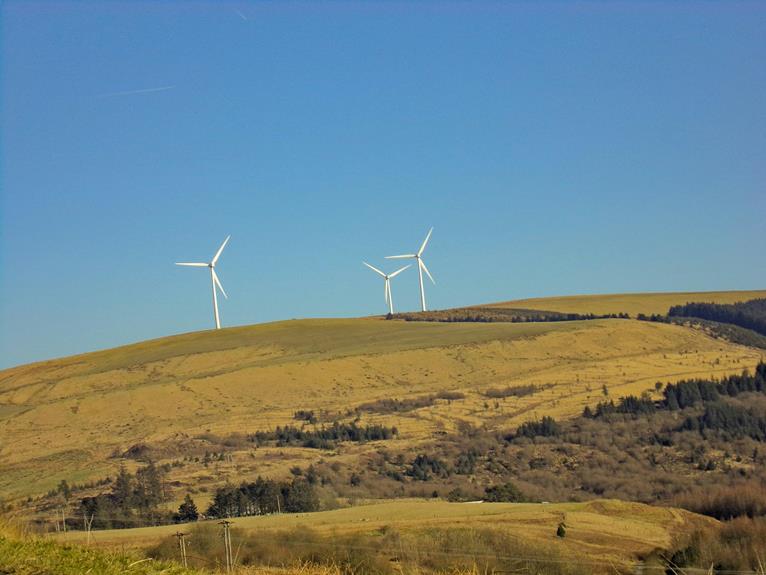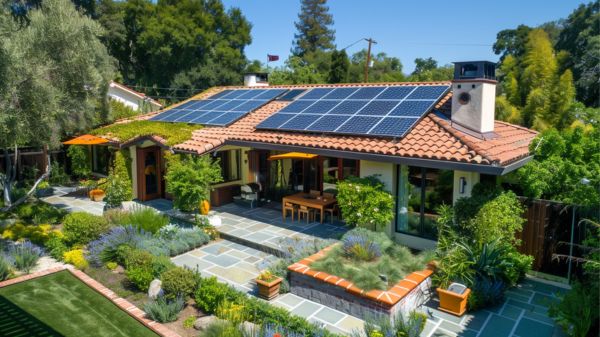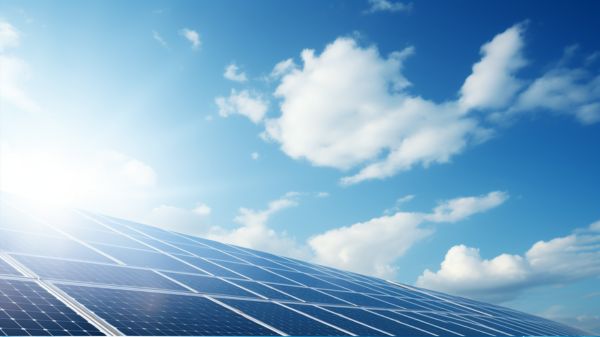Ladies and gentlemen, welcome to our journey towards a greener future! Today, we embark on a quest to explore the 6 best green energy sources and conservation strategies. These remarkable sources, like rays of hope, shine a light on our path to a more sustainable world.
Solar power, wind energy, hydroelectricity, biomass, geothermal energy, and energy efficiency are our companions on this noble quest.
Together, we will reduce greenhouse gas emissions, break free from fossil fuel dependence, and combat the impacts of climate change. Not only that, but these strategies also have the power to create jobs, improve air quality, and lower electricity costs.
So, let us join hands and embrace these green energy sources and conservation strategies as we walk towards a brighter, more harmonious future.
Solar Power and Photovoltaic Systems
We believe that solar power and photovoltaic systems offer the most efficient and cost-effective renewable energy solution for reducing greenhouse gas emissions and promoting sustainable development.
Solar power refers to the conversion of sunlight into electricity using solar panels. Photovoltaic systems use solar cells to directly convert sunlight into electricity.
These energy sources are crucial in addressing the challenges associated with traditional energy sources and their negative environmental impacts. Solar power and photovoltaic systems are clean and sustainable, producing no greenhouse gas emissions during electricity generation. They also have a low environmental footprint and contribute to energy independence and security.
In addition, solar power and photovoltaic systems create job opportunities and support local economies, particularly in rural communities.
With ongoing technological advancements and energy storage solutions, solar power and photovoltaic systems are becoming more reliable and cost-effective, making them key players in the transition to a green energy future.
Wind Energy and Wind Farms
Wind energy and wind farms offer a sustainable and efficient solution for generating electricity and reducing greenhouse gas emissions. As a key component of renewable energy, wind farms play a vital role in diversifying our energy resources and mitigating climate impacts.
Europe leads the way in wind energy capacity, demonstrating its significance in sustainable power generation. Wind energy is a clean and renewable resource that helps enhance air quality and reduce the release of greenhouse gases. By harnessing the power of wind, we can promote clean energy and contribute to a greener future.
Wind farms also bring economic benefits, creating job opportunities and supporting sustainable practices. With their widespread impact and potential, wind energy and wind farms are crucial for a more sustainable and resilient energy system.
Hydropower and Hydroelectric Dams
One of the most significant renewable energy sources is hydropower, utilizing the force of running water to generate clean electricity. Hydroelectric dams play a crucial role in harnessing this power and are considered one of the most reliable and mature renewable energy technologies.
The world needs green energy sources like hydropower to meet the increasing demand for electricity while reducing greenhouse gas emissions. Hydroelectric dams provide a sustainable and efficient way to generate power, contributing to energy security and lowering electricity costs. Not only do they create job opportunities and support sustainable development, but they also help in mitigating the impacts of climate change.
However, it’s essential to carefully consider the environmental effects of hydroelectric dams, such as the disruption of fish migration and potential harm to wildlife. Implementing conservation strategies can help minimize these impacts and ensure the sustainable use of hydropower as a valuable renewable energy source.
Geothermal Energy and Heat Pumps
Geothermal energy and heat pumps offer a compelling alternative to traditional heating methods. When comparing the cost and efficiency, geothermal systems have proven to be highly advantageous.
In terms of cost, the operating expenses are significantly lower due to the utilization of renewable energy. Moreover, geothermal systems boast impressive efficiency rates, providing a sustainable and environmentally friendly solution for heating and cooling needs.
Geothermal Vs Traditional Heating
Our research has found that a significant reduction in electricity costs can be achieved by utilizing heat pumps powered by renewable energy sources such as geothermal.
When comparing geothermal heat to traditional heating methods, the benefits of geothermal become clear. Traditional heating relies on fossil fuel production, leading to environmental damages and contributing to climate change impacts.
In contrast, geothermal energy is a renewable energy source that provides a sustainable alternative. By harnessing the Earth’s natural heat, geothermal systems offer energy security and reduce the carbon footprint associated with heating.
Additionally, geothermal heat pumps promote conservation strategies by improving energy efficiency and reducing reliance on non-renewable resources.
Cost and Efficiency Comparison
When considering the cost and efficiency of geothermal energy and heat pumps, we frequently find that geothermal systems offer higher energy efficiency ratings and lower operating costs compared to heat pumps. This makes geothermal energy a more attractive option for those looking to reduce their reliance on fossil fuels and decrease greenhouse gas emissions.
Here are three key points to consider when comparing the cost and efficiency of geothermal energy and heat pumps:
- Energy Efficiency: Geothermal energy systems have a higher energy efficiency rating compared to heat pumps. This means that they can convert a higher percentage of the energy they consume into usable heat or electricity, resulting in lower energy waste.
- Operating Costs: Geothermal systems have lower operating costs compared to heat pumps. They require less energy to operate, which translates to lower utility bills and long-term savings.
- Initial Investment: Geothermal energy systems have higher initial costs compared to heat pumps. However, over time, the lower operating costs can offset the higher upfront investment, making geothermal energy a cost-effective option in the long run.
Environmental Benefits of Geothermal
One of the significant advantages of utilizing geothermal energy and heat pumps is their positive impact on the environment. Unlike fossil fuels, geothermal energy is a renewable resource that doesn’t emit greenhouse gases, making it a sustainable option for meeting our energy needs. By tapping into the Earth’s natural heat, geothermal technology reduces our reliance on non-renewable energy sources and helps to mitigate climate change.
In addition, geothermal heat pumps provide a clean and efficient way to heat and cool buildings, promoting energy conservation and reducing emissions. Compared to other renewable energy sources like solar and wind, geothermal energy is available 24/7 and isn’t dependent on weather conditions. This makes it a reliable and consistent source of clean energy for a sustainable future.
Biomass and Bioenergy Production
To begin our discussion on biomass and bioenergy production, let’s explore the potential of utilizing organic materials for renewable energy generation. Biomass energy production offers several advantages as a green energy source and conservation strategy. Here are three key benefits:
- Renewable Energy: Biomass is derived from organic materials such as wood, agricultural crops, and waste, which can be replenished naturally. By harnessing biomass, we can reduce our dependence on non-renewable sources like fossil fuels and contribute to a more sustainable energy future.
- Waste Management: Biomass and bioenergy production can help manage organic waste by converting it into useful energy. This not only reduces the amount of waste in landfills but also mitigates the release of harmful greenhouse gases.
- Economic Opportunities: The cultivation and processing of organic materials for energy production can create economic opportunities and job growth, especially in rural communities. This can foster local development and support sustainable practices.
Energy Conservation and Efficiency Measures
In this article, we’ll explore the importance of implementing energy conservation and efficiency measures as a key component of our green energy sources and conservation strategies.
Energy conservation and efficiency measures play a crucial role in reducing our reliance on fossil fuels and mitigating greenhouse gas emissions. By utilizing renewable sources such as wind turbines and solar panels, we can maximize energy production while minimizing environmental impact.
However, the intermittent nature of solar and wind energy necessitates the development of efficient energy storage solutions. Technological advancements in this area are essential for ensuring a stable and reliable energy supply.
Additionally, streamlining domestic policy frameworks and regulatory processes can incentivize investments in energy conservation and efficiency measures. By shifting energy subsidies from fossil fuels to renewable sources, we can foster sustainable economic growth and improve public health.
Embracing energy conservation and efficiency measures is vital in our pursuit of a greener and more sustainable future.
Conclusion
In conclusion, harnessing the power of solar, wind, hydroelectric, geothermal, biomass, and energy efficiency strategies is crucial for a sustainable and environmentally friendly future. By embracing these green energy sources, we can:
- Reduce greenhouse gas emissions
- Decrease reliance on fossil fuels
- Mitigate the impacts of climate change
This will pave the way for:
- Job creation
- Improved air quality
- Lower electricity costs
- Promote sustainable development
Let’s embark on this path towards a brighter and greener future.




